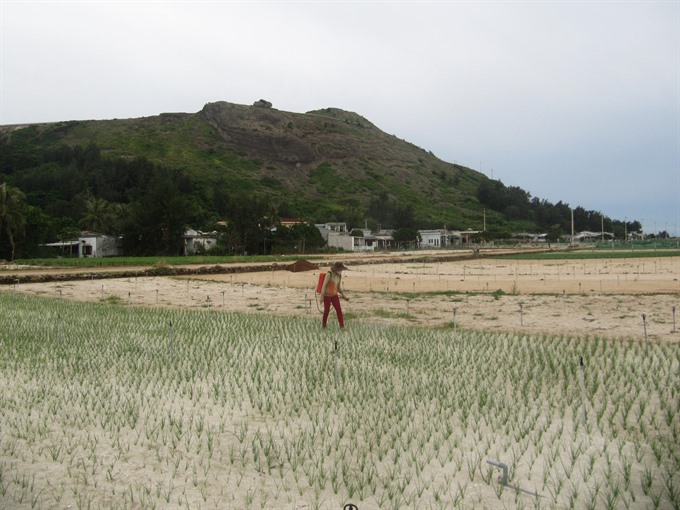 Society
Society

Population and 50 per cent of farming area in the Island of Lý Sơn District, 30km off the coast of Quảng Ngãi Province have been salinised in early dry season this year, reducing area of purple onion – a major crop – in the island from 170ha to 50ha.
 |
| A farmer waters for a farm of onion and garlic in Lý Sơn Island, off the coast of Quảng Ngãi Province. Farmers on the island have been facing limited sources of water in early dry season of 2018. — VNS Photo Công Thành |
LÝ SƠN ISLANDS — Half of the farming area on Lý Sơn Island, 30km off the coast of Quảng Ngãi Province, has been salinised in the early dry season this year, reducing coverage of the key crop purple onion from 170ha to 50ha.
Vice chairwoman of the district’s People’s Committee Phạm Thị Hương said the district warned farmers to change to other crops that use less water than onion and to dredge deeper wells on the island for household water use.
Hương said the island would dry up if the weather keeps getting hotter and rain doesn’t come.
She said residents and tourists had to use salinised water, while islanders in An Bình Islet, 4.8km off Lý Sơn Island, could use fresh water from the South Korean heavy industry group Doosan Vina-funded desalination station project.
“We have called for saving daily fresh water use among 22,000 residents and tourists, while dredging wells to seek deeper water,” Hương said.
“Water for farming will face a serious deficiency if local farmers do not cut farming area in the summer-autumn onion crop. We urged local residents to insert drought resilient crops instead of garlic and onion during the possible drought this year,” she added.
Hương said the Thới Lới water reservoir with capacity of 300,000cu.m is reserved for farming only and the worst possible droughts.
She said the island has been seeking measures for water conservation by building a water supply system from the mainland and a desalination station as well as developing solar and wind power systems soon.
“Saving water during daily use will be an effective measure to preserve enough fresh water in the island, while a drainage recycling system and more water containers are also needed for the island.”
About 73 per cent of Lý Sơn islanders make their living from garlic and spring onion crops and fishing.
On average, a 300ha farm provides 3,500 tonnes of onion and 2,000 tonnes of garlic. — VNS